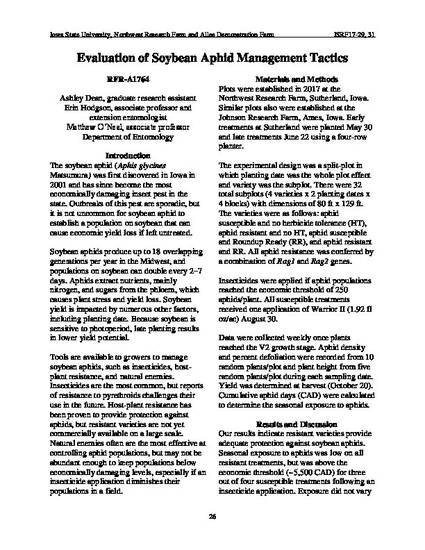
The soybean aphid (Aphis glycines Matsumura) was first discovered in Iowa in 2001 and has since become the most economically damaging insect pest in the state. Outbreaks of this pest are sporadic, but it is not uncommon for soybean aphid to establish a population on soybean that can cause economic yield loss if left untreated. Soybean aphids produce up to 18 overlapping generations per year in the Midwest, and populations on soybean can double every 2–7 days. Aphids extract nutrients, mainly nitrogen, and sugars from the phloem, which causes plant stress and yield loss. Soybean yield is impacted by numerous other factors, including planting date. Because soybean is sensitive to photoperiod, late planting results in lower yield potential. Tools are available to growers to manage soybean aphids, such as insecticides, host-plant resistance, and natural enemies. Insecticides are the most common, but reports of resistance to pyrethroids challenges their use in the future. Host-plant resistance has been proven to provide protection against aphids, but resistant varieties are not yet commercially available on a large scale. Natural enemies often are the most effective at controlling aphid populations, but may not be abundant enough to keep populations below economically damaging levels, especially if an insecticide application diminishes their populations in a field.
Available at: http://works.bepress.com/erin_hodgson/300/
